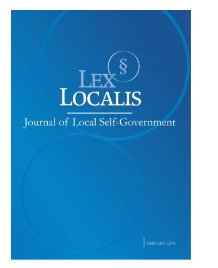STUDY OF HUMAN-ROBOT COLLABORATION IN SMART FACTORIES: ILLUSTRATIONS USING DELHI-NCR BASED FACTORIES
DOI:
https://doi.org/10.52152/801630Keywords:
Human-robot, Automation, Artificial Intelligence.Abstract
Human-Robot Collaboration (HRC) is reshaping various industries by merging human adapt- ability, decision making skills, and dexterity with the accuracy, efficiency and cost effectiveness of robotic systems. This research explores how the integration of HRC influences efficiency of operations in factories, workforce dynamics, and technology adoption in manufacturing envi- ronments. Focusing on a range of factories from fully manual to those with lots of automation, this study analyses the opportunities and challenges presented by collaborative robotics in real world industrial settings. The research methodology was primarily qualitative, supported by some quantitative data, and involved conducting structured interviews and surveys with per- sonnel and high level staff across four factories in the Delhi-NCR region. The data collection focused on aspects such as labor challenges, order tracking, automation barriers, sustainability efforts, and future technology plans. By comparing experiences from different automation con- texts, the study identifies patterns and contrasts in how factories manage the balance between manual processes and collaborative technologies. The results show that the automation levels show a spectrum of contrasting differences. In factories solely functioning manually, there are difficulties with order tracking inefficiencies, high labor costs, and low sustainability. These oper- ations are over reliant on outdated and inefficient systems and it is difficult to scale production. Semi-automated facilities are in between, combining high-end tools and CNC machines with labour and manual variations. There have been some gains in accuracy and reduced manual effort, but there are still barriers. Despite the differences between factories and their industries, there were some major emerging cross-cut cutting themes: the need for automation strategies, human-centric design and custom yet scalable infrastructure. Researchers have emphasized that successful Human-Robot Collaboration (HRC) does not only depend on technologically imple- menting automation. Successful HRC depends on retraining, ergonomics and cost management. In summary, human-robot collaboration has the potential to be transformative in regions like Delhi NCR, but its success is reliant on technology, labor practice, and long-term adaptability.
Downloads
Published
Issue
Section
License
Copyright (c) 2025 Lex localis - Journal of Local Self-Government

This work is licensed under a Creative Commons Attribution-NonCommercial-NoDerivatives 4.0 International License.








